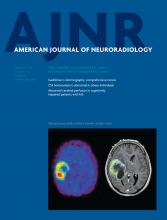I read with great interest the article “Vertebral Endplate Changes Are Not Associated with Chronic Low Back Pain among Southern European Subjects: A Case Control Study” by Kovacs et al.1 Their article demonstrates the challenges we face when attempting to correlate imaging findings with clinical symptoms in patients with back pain.
In their discussion, the authors state, “In the case of vertebral endplate changes, refraining from including this finding in radiologic reports or mentioning it as a finding that is associated with disk degeneration but is likely to be clinically irrelevant may be a way of protecting patients from unnecessarily aggressive forms of treatment or overtreatment.” Are the data strong enough to support the authors' view? This opinion, potentially stemming from the personal experience of the authors and well-publicized articles examining the overuse of spinal fusion surgery,2 merits further examination and raises a general question on the role of paternalism in radiology.
What motivations lie behind the propensity to include or exclude certain findings in our reports? I suspect that all neuroradiologists, at one time or another, have downplayed what we perceived as inconsequential findings by our choice of wording or omission from the radiologic report. In fact, in most groups, some partners may be thought of as “overcallers” or “undercallers” based on their long-term pattern of reporting. We all want what is best for our patients and thus are undoubtedly influenced when we encounter the negative sequelae of surgical procedures performed for questionable indications. Are choices of what to include or omit from our reports always backed by scientific evidence? Although Kovacs et al1 provide robust data on the question of endplate changes and back pain, are these results conclusive enough to eliminate discussion of endplate changes in all of our patients referred for spine MR imaging in the setting of back pain? To what degree does the paucity or absence of relevant clinical information on examination requisitions confound how we apply significance to imaging findings? Does it constitute radiologic paternalism to under-report certain imaging findings on the basis of our own perception of clinical relevance? By our choice of whether to report a finding, are we truly “protecting patients from unnecessarily aggressive forms of treatment or overtreatment” as Kovacs et al suggest?
References
- © 2013 by American Journal of Neuroradiology







